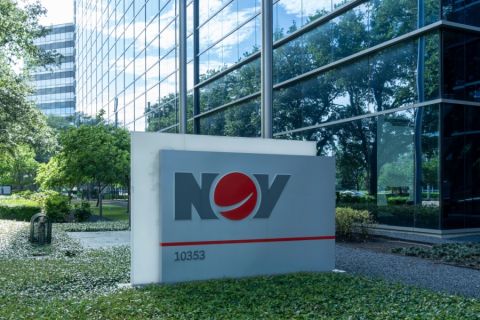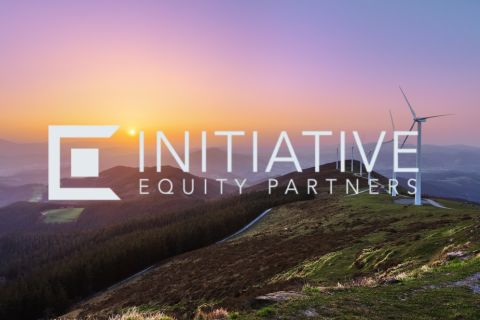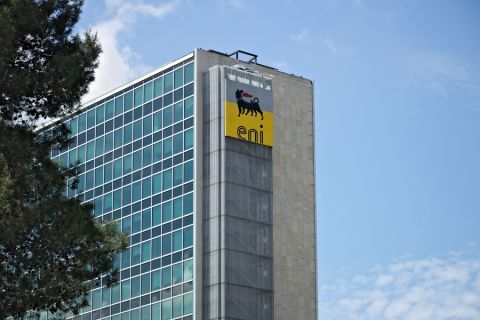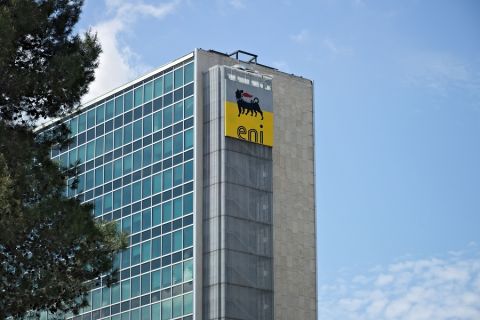The Eagle Ford shale, discovered in 2008, is unlike some other unconventional resource plays in that it contains both oil and natural gas. Found in South Texas, the resource spreads across some 30 counties, stretching from north of Gonzales down to Webb County at the Texas-Mexico border.
In 2011, the play generated nearly $25 billion in revenue, supported some 47,000 full-time jobs and provided nearly $257 million in local government revenue, according to a study by the University of Texas at San Antonio Institute for Economic Development. The study concludes that the play will create about 117,000 full-time jobs by 2021.
In mid-February, U.S. Representative Pete Olson spent 48 hours in San Antonio and at the Eagle Ford. After hearing the buzz about the Eagle Ford, he traveled to see the difference the development is making, not only for Texas, but for America’s domestic energy production—and he wanted to see it with his own eyes. During the visit, he learned about the potential of the energy source, but noted that several challenges must be overcome to bring the resource to its full potential.
“For example, the oil and gas industry should be worried about federal involvement in hydraulic-fracturing well-stimulation efforts. In Texas, we have done a great job in regulating fracking with our Railroad Commission,” he told Jeannie Stell, editor of Midstream Business in a telephone interview.
Olson is concerned about some proposed guidelines on diesel that he feels could cause unnecessary confusion and could open the door for states, like Texas, to lose their privacy for obtaining fracking permits. Olson’s solution is to leave it with the states.
“There’s a big myth out there that some hydraulic fracturing operations have caused some sort of water contamination, or a threat to the water,” he says. “That has not happened in the 50 years this process has been going on. For 20 years, we have had a great experience in Texas with the shale play and again, this administration is looking to restrict the development of domestic energy.”
Olson believes the shale plays have changed the face of energy and says that, for the first time in his life, he can tell people with confidence that the U.S. has a chance to become independent of foreign sources of energy—at least non-North American sources.
“Now we can eliminate reliance on the Middle East and use energy supplies that we have in America. These two techniques, fracturing and directional drilling, are game changers for American energy,” he says.
Canadian resource
Olson sees TransCanada Corp.’s Keystone XL Pipeline project, which would bring Canadian crude oil to the Texas Gulf Coast for refining, as a potential boon for the state. Yet, it’s obvious politics have entered into this decision, he says, admonishing the present administration for delaying a decision until after the election.
Members of the Energy and Commerce committee listened to the American people and said “that’s wrong,” says Olson. In fact, TransCanada Corp. has stated there are 20,000 true shovel-ready jobs “right in America,” if the pipeline had been approved immediately, along with some 800,000 barrels (bbl.) of oil that would be flowing from Canada to Southeast Texas.
As Olson sees it, “That’s Canada, someone we can trust, not like some countries in the Middle East which don't like us. That’s energy security, which equals national security. So, when I go home, I tell people that’s my priority for the rest of this Congress—to make sure the Keystone XL Pipeline gets approved fully from Southeast Texas back to Alberta, Canada.”
In response to the criticism of bringing Canadian crude to Texas just to export it, Olson says the system would bring Canadian crude into the U.S. energy system, and says that not all of the oil products are going to be exported. The majority of it is going to stay in the U.S.
“I don’t know what the percentage is, but by far, the majority of that oil is going to stay right here in the U.S. It’s a global market, so the more supply, the more costs go down. That means 20,000 American jobs, 800,000 bbl. of oil flowing down from Canada, the U.S. not worrying about Saudi Arabia and Venezuela taking us out of the energy supply chain and more energy security and national security. It’s a win, win, win,” says Olson.
Olson believes in free markets. Imported Canadian crude will create American jobs here instead of overseas, he says. “If we have a surplus supply in America, it would be right to send it overseas. Exporting some oil overseas will reduce the trade deficit.”
Because he serves on the Energy and Commerce Committee, Olson has been fighting this battle in Congress. He spoke of two recent amendments offered in committee and on the House floor. One would restrict oil coming through the Keystone XL pipeline from being exported out of the U.S., and the other was related to restricting the export of liquefied natural gas.
The overwhelming majority of the House of Representatives rejected those amendments, Olson says. “The American people know we are in a global economy, and we need to get out there and compete. We can make a profit here in America and take our exports overseas and make a profit there, reduce our trade deficit and have influence all over the world.”
The tour
Olson’s trip was hosted by Chesapeake Energy Corp. and Swift Energy Co. His group traveled to Dimmit County, about an hour and a half from San Antonio, where he viewed a well in its initial 5,000-feet-depth drilling stage and as the operator prepared to begin the turn to drill horizontally.
I was just so amazed. I thought that the drilling would take a longer time. They have about 90 feet of pipe, in 30-foot sections, and screw them together. As I was watching, I thought that every 10 minutes it would go down a little bit. No, that was 90 feet down in less than five minutes.” He watched as the rig operators, using the next ready 30-feet sections, drilled about 180 feet.
Later, the Congressman watched as workers prepared to begin fracking and recovering oil and gas. He likened it to pictures of troops and equipment amassed during World War II. The 25 water trucks were placed in position, and the process was completely orchestrated and in keeping with what had to be done, he says. Olson drew another comparison to the Johnson Space Center, which he represents, and to the precision of what the National Aeronautics and Space Administration does with the astronauts and the space program.
In a conversation with the operators, he was told that about 4:10 a.m. the following morning, the drillers planned to start “pushing,” injecting fluid into the well. “It’s just amazing, the technology,” he says.
What most impressed Olson were the men and women working in the Eagle Ford. He noticed most of the people were young, in their mid-20s, and had only a high-school degree. But he learned they were making good money, $55,000 for the first year and $100,000 after four or five years, although his feeling was that the people working there were not doing it just for the money.
“It was cold,” he says. “A cold front had just come through. It was drizzly and raining. I had my jacket on, but I was shivering after about an hour and a half. I was out there with mud all over my boots. These kids were in that stuff the same as I was, and they just got it done,” says Olson.
The workers persevere for their families, says Olson. “It’s about the fact that they can give their kids something that we have been trying to do for our kids for almost 50 years, and that is an America where we are independent of foreign sources of energy. I saw the pride that they had. It was just amazing. That’s what I took away from this, just being reinvigorated as an American. Those are entrepreneurs out there who are doing what’s best for our country, not because they are getting paid for it, but because they see that their children and grandchildren will have a better life because of what they are doing out here.”

Chesapeake field employees pose with U.S. Representative Pete Olson during his recent tour of the Eagle Ford shale play.
Safety and environment
Also, Olson was impressed with the management of the site, which put to rest any concerns he had about safety and environmental issues. Each time he was at the site, he was lectured about safety issues for the first 15 minutes of his visit. He was required to wear coveralls, a hard hat, safety glasses and earplugs at all times. He was not given any special safety treatment, he says, as he was told the precautions are normal procedure for everyone.
“One of the aspects about which I have been impressed by the oil and gas industry is that it is like my career in the Navy,” says Olson. “Every person on the site is a safety officer, starting with the young man who was on his first week on the rig. If he sees a potential hazard, he’s encouraged to go to the boss and tell him he’s not comfortable with what is going on so the boss can address it. This is the environment that they created.”
The site personnel told Olson that they are very conscious about the environment because “this is where they live.” No one wants clean air and clean water more than the people working on the rigs, he says, and every regulation that was required, from the federal government and the state of Texas, were in full compliance.
Challenges and opportunities
the play is relatively new, the gathering, pipeline and processing infrastructure is not completely built out, says Olson. “They are playing a little catch up, but I saw that they were making progress and building and improving roads.” Also, housing can be a challenge in these new plays. As one solution, Weatherford rented out a hotel for an entire year to house its people.
the economic benefit to the area, Olson says, “Because of this development, the Dimmit County property tax revenue kept going up. And the sales tax revenue went up 800% in four years. They have no new taxes, just more new revenue being generated in the county.”
The continual influx of workers is the driver for the increased revenue, he says. New workers are buying goods, going to restaurants and grocery stores and filling up at local gas stations. Such simple events have made a big difference in the area’s economy, because each of the local items generates incremental taxes, he says.
The property tax revenue is also up,” explains Olson. “Many Eagle Ford school districts used to rely on ‘Robin Hood’ taxes. That is the practice of taking tax revenue from the more successful counties and spending it in the disadvantaged counties, from an educational perspective. No more. Money is determined school district by district, not county by county. They now have more money than they can use, and so they now can help those less viable. And that’s happening all over Eagle Ford. It’s game changing for Texas education.”
Olson notes that the local population had been concerned that this boom would be a temporary fix, providing them with jobs and money now, but questioned what would happen in four to five years if the gas and oil jobs disappeared. Would they go back to the way it was before this all happened?
Not at all, says Olson. “One company is building a six-story multi-stage office building right here, 30 miles south of San Antonio. Do you think it would put this up here if they were going to get out in five to 10 years? The company is making a commitment to be here for the foreseeable future.” Olson knows the people in Southeast Texas are excited because they have never had unemployment levels at close to zero. He concedes there are challenges, with keeping up the roads, building new roads and other infrastructure, but he feels it’s a great problem to have.
Addressing potential issues regarding leasing and rights-of-way, Olson says operators have been very conscious about private property and have not taken more than needed. They try to make a minimal footprint.
“In fact, one of my best friends in Sugar Land is upset because he lives on a ranch out in Gonzalez, Texas, which is about 20 miles from the Eagle Ford play. He’s bumming because he isn’t getting any of that Eagle Ford leasing or pipeline right-of-way money that’s going out just about 20 miles from him.”
Meanwhile, pipeline operators are building new infrastructure to get the oil and gas out of the play, says Olson. He notes that several projects on the Gulf Coast are in discussions, including Texas projects in Corpus Christi and port expansions in Houston and Beaumont.
Olson wants to get his colleagues “on board” and share his enthusiasm. “I’m trying to get my colleagues on the Energy and Commerce Committee and the House Energy Action Team to go out there and see it. They will be amazed and proud to realize that we have a chance to truly become energy independent, which was a talking point for many, many years. And because of what is going on in the Eagle Ford, Barnett and Marcellus shale plays, we can actually develop energy right here, and not have to get energy from people who don’t like us. This is no longer ‘unconventional’ drilling. This is now ‘conventional’ drilling.”
Recommended Reading
Keeping it Simple: Antero Stays on Profitable Course in 1Q
2024-04-26 - Bucking trend, Antero Resources posted a slight increase in natural gas production as other companies curtailed production.
NOV Announces $1B Repurchase Program, Ups Dividend
2024-04-26 - NOV expects to increase its quarterly cash dividend on its common stock by 50% to $0.075 per share from $0.05 per share.
Initiative Equity Partners Acquires Equity in Renewable Firm ArtIn Energy
2024-04-26 - Initiative Equity Partners is taking steps to accelerate deployment of renewable energy globally, including in North America.
Repsol to Drop Marcellus Rig in June
2024-04-26 - Spain’s Repsol plans to drop its Marcellus Shale rig in June and reduce capex in the play due to the current U.S. gas price environment, CEO Josu Jon Imaz told analysts during a quarterly webcast.
Ithaca Deal ‘Ticks All the Boxes,’ Eni’s CFO Says
2024-04-26 - Eni’s deal to acquire Ithaca Energy marks a “strategic move to significantly strengthen its presence” on the U.K. Continental Shelf and “ticks all of the boxes” for the Italian energy company.





